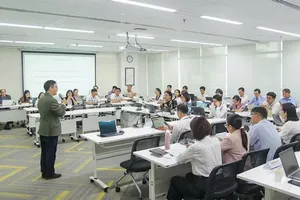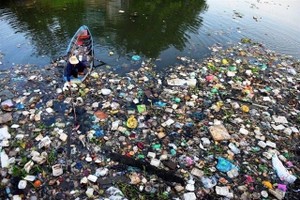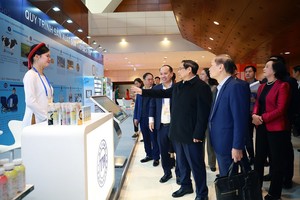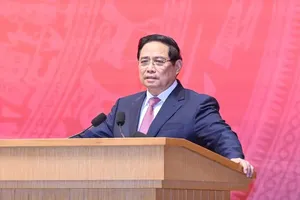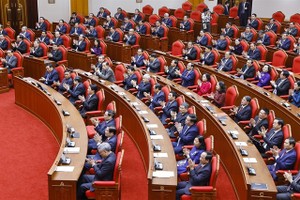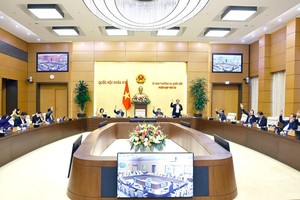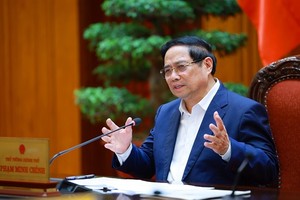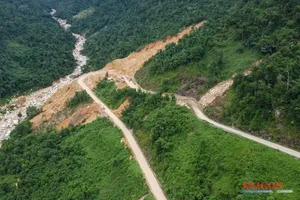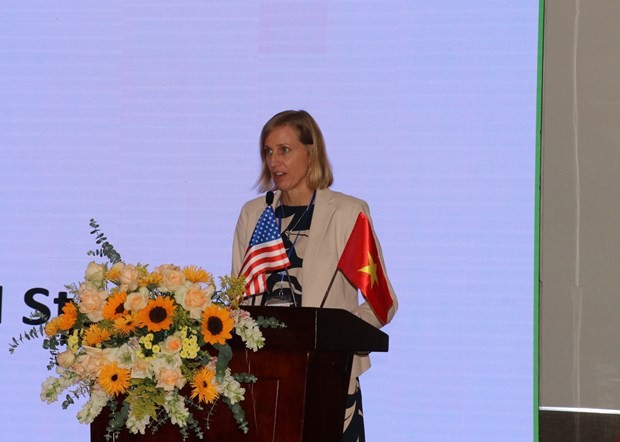
The event was co-hosted by the provincial People’s Committee, the US Consulate General in Ho Chi Minh City and the Becamex IDC, with over 200 enterprises at home and abroad taking part.
Speaking at the event, US Consul General in Ho Chi Minh City Susan Burns said Vietnam has emerged as a key industrial production hub in the region. The robust growth of its logistics sector, while commendable, has posed environmental challenges, compelling companies to adopt green manufacturing practices and embrace the shift towards clean energy to align with production requirements.
She highlighted the growing interest among US firms in cutting-edge technologies, particularly in solutions such as rooftop solar energy, as part of their commitment to reduce emissions and advance the collective goal of achieving net-zero by 2025.
Permanent Vice Chairman of the provincial People’s Committee Mai Hung Dung highlighted Binh Duong's proactive approach to adapting to uncertainties stemming from geopolitical factors and the fourth industrial revolution.
He said the province is actively developing a new ecosystem that complements the existing industrial-urban-service model. This involves an innovative and technological ecosystem, the establishment of smart industrial zones, sustainable and ecologically smart urban areas, all with sustainable development at its core.
Binh Duong aspires to enhance its industrial sector, progressively creating a driving force for new economic development that moves away from labour and land-intensive practices. The ultimate objective is to actively deliver on the Vietnamese Government's commitment to achieving net-zero emissions by 2050, he added.

